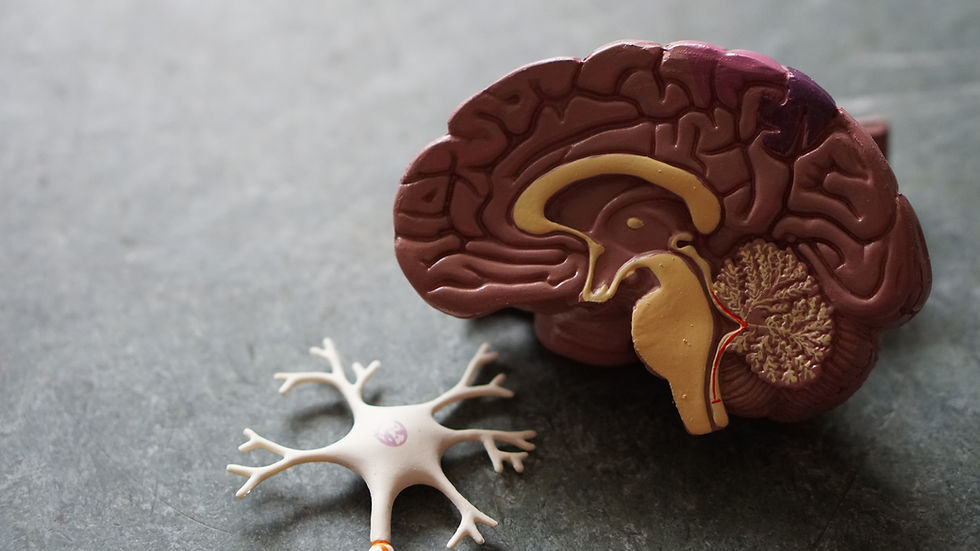Metabolite Diagnostics Will Drive Treatments For PD

Descriptions of Parkinson’s Disease (PD) date back to antiquity - there are even references to PD-like symptoms in the Bible. In 1817, James Parkinson, whom the disease would later be named for, published a more formal description in his “An Essay on the Shaking Palsy”. The next 200+ years marked several different milestones in our understanding of PD. Two major events stand out. In the early 1900s, via autopsies, Frederick Lewy and Konstantin Tretiakoff discovered that aggregates in the substantia nigra (SN) of the brain were a defining feature of the disease. Still, to this day, the only confirmatory diagnosis for PD remains via a post-mortem brain autopsy to confirm the presence of these aggregates, now known as Lewy bodies. In 1960, Oleh Hornykiewicz discovered that dopamine was reduced in the SN of PD patients (also via autopsy). The following year, L-dopa, a precursor to dopamine, was shown to be effective at mitigating PD symptoms. Still to this day this, dopamine replacement therapy is the only treatment for PD.
PD urgently needs better diagnostics and better treatments. In fact, improved PD diagnostics will drive improved treatments. Right now, PD is diagnosed based on behavioral symptoms (postural instability, bradykinesia, rigidity, and resting tremor). The problem is that these clinical symptoms don’t typically manifest until 5-10 years into disease progression, at which point there is already massive neurologic damage (loss of 80% of dopaminergic neurons). This late-stage diagnosis creates a very limited opportunity for therapeutic intervention. While stem-cell treatment may one day be able to restore neuron loss, we are not there yet. A far better alternative would be to detect PD at its earliest onset (with the majority of neurons still intact) and identify therapies that can halt disease progression. Early diagnosis revolutionized cancer treatment, and it is poised to do so in PD, with a few important distinctions.

From 2006-2020, the number of completed interventional trials with data for PD was only 199. During that same time, there were 1,036 trials for breast cancer. In addition, the overwhelming majority of PD trials focused on methods to alleviate symptoms. There were hardly any trials for disease-modifying treatments (DMTs). Sadly, this is in part because DMTs that slow or stop disease progression for neurodegenerative diseases like PD have a nearly 100% clinical failure rate. What are the factors contributing to the limited number of interventions and bigger failures in PD compared to oncology? Honestly, there are many. One root cause is our limited ability to identify and stratify PD patients. As many as 32% of patients with PD are misdiagnosed. How are PD drugs supposed to work (and meet endpoints) if 3 out of 10 patients included in trials don’t really have the disease? Further, PD patients are incredibly heterogeneous; not all patients experience the same symptoms, nor do they progress at similar rates. We need improved diagnostic tools to identify patients early during disease onset and monitor disease progression to better understand the factors contributing to PD.
Oncology solved – or at least partially solved – the patient identification problem by turning to genomics. Cancers are now routinely subdivided based on genetic mutation; for example, gastrointestinal stromal tumors (GIST) are often diagnosed based on the presence of a C-kit mutation, and lung cancers are often classified and treatment decisions made based on an ALK mutation. Genomics is less likely to be useful in PD. The vast majority of PD cases (90%) do not have a genetic link. In fact, even individuals who have a genetic risk factor for PD, such as a mutation in LRRK2, do not always manifest symptoms. For PD and other neurodegenerative disorders, there is a need to look beyond the genome for diagnostics. Metabolites are nature’s communication system, providing a readout of the complex interaction between the genome and the environment. We and many other labs across the globe have observed altered metabolite levels in biofluids from PD patients compared to those without PD, as well as in PD patients with a genetic mutation compared to those with the same mutation but no symptoms. Thus, metabolite biomarkers hold incredible promise for revolutionizing PD diagnostics, and Olaris is engaging multiple stakeholders worldwide to access the clinical samples needed to make an early diagnostic for PD a reality.
A metabolite-based diagnostic for PD will have tremendous clinical utility. It will end the diagnostic odyssey for PD patients and their families. While currently only identifiable in retrospect, years prior to any movement-related symptoms, many PD patients report experiencing more subtle symptoms such as constipation, depression, and memory or sleep problems. This often leads to several years of anxiety, frustration, and diminished quality of life for the patient and their families. Earlier diagnosis will allow patients to better understand their symptoms early on, ending the uncertainty surrounding their health concerns.
A metabolite-based diagnostic for PD will also streamline drug development. It will enable biopharma to better identify patients who actually have PD and perhaps PD subtypes. This will empower researchers to conduct more predictable and better powered clinical trials in well-defined populations. Metabolite-based diagnostics that correlate with disease progression could even replace subjective endpoints, which has the potential to power single-arm studies for regulatory approval. Metabolite-based PD diagnostics will create a virtuous cycle, whereby improved diagnosis uncovers more robust patient populations, which allows biopharma to develop better drugs, which improves patient outcomes, increasing the incentive for more diagnostic development. Looking forward, the landscape for PD should be similar to oncology: we now know that there are more than 100 types of cancer caused by 300+ known cancer genes, which can be treated using hundreds of approved therapies, and novel clinical trials with dozens of new therapies are introduced each year. Metabolite-based diagnostics have the potential to kickstart this innovation for PD, bringing PD diagnosis and treatment into the modern age.


Comments